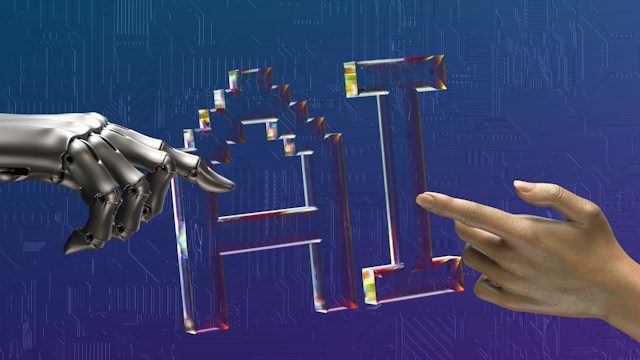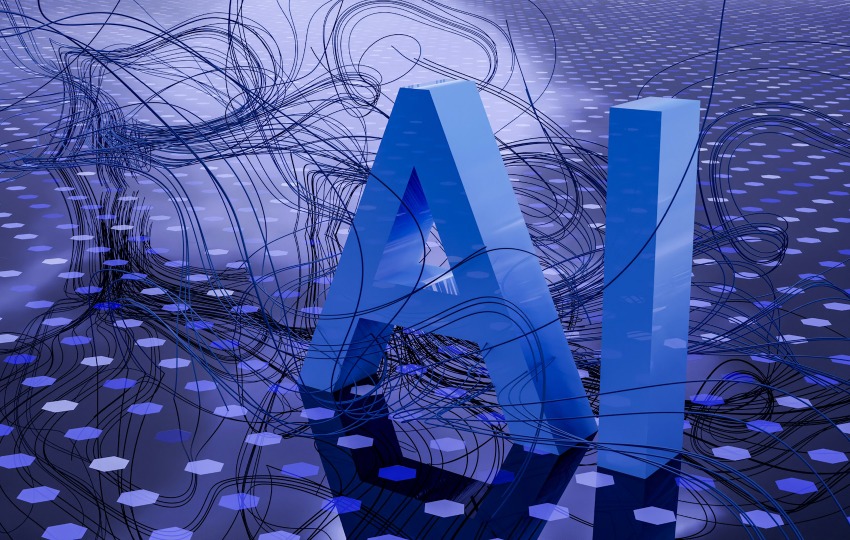The spectre of an AI-powered future looms, promising both revolution and disruption. While concerns about automation abound, the truth is that AI presents incredible opportunities for progress and growth across industries. But to seize these opportunities, we must address a critical hurdle: the AI skills gap.
This gap represents the difference between the skyrocketing demand for AI expertise and the limited pool of individuals possessing those skills. This mismatch not only threatens economic growth but also risks exacerbating social inequalities. To navigate the complexities of AI and harness its full potential, we must bridge this gap by investing in AI in education to prepare the workforce of tomorrow.
Understanding the Scope of the Challenge
The demand for AI talent is soaring across diverse sectors. From developing AI-driven applications to interpreting data and ensuring ethical implementation, the need for individuals with varied AI skill sets is immense. Reports predict millions of AI-related jobs will emerge in the coming years, yet a significant shortage of qualified candidates exists to fill them. This deficit stems from several factors:
- Rapidly evolving technology: The field of AI is constantly progressing, making it challenging for educational institutions and training programs to adapt their curriculums at the same pace.
- Limited AI education: Traditionally, educational systems haven’t prioritized integrating AI fundamentals into core curriculums or offering specialized AI programs.
- Accessibility and affordability: High-quality AI training programs can be expensive and geographically inaccessible, creating barriers for diverse populations.
Building the Bridge with AI in Education

Bridging the AI skills gap requires a multifaceted approach. Here are some key strategies that leverage AI in education as a cornerstone:
- Revamping Education with AI: Educational institutions must integrate AI fundamentals into core curriculums and offer specialized AI programs at various levels, from vocational training to postgraduate degrees. Interactive simulations, AI-powered learning platforms, and gamified experiences can make learning engaging and accessible.
- Upskilling and Reskilling with AI: Equipping existing workforce populations with the necessary skills is crucial. We can leverage AI in education through targeted online courses, boot camps, and micro-credentials focused on in-demand AI skills tailored to specific industries and needs.
- Public-Private Partnerships: Collaboration between governments, educational institutions, and private companies is vital. These partnerships can develop targeted training programs, share resources, and incentivize AI education through scholarships and funding initiatives.
- Promoting Diversity and Inclusion in AI Education: We must actively encourage participation from underrepresented groups in AI education and training. This requires targeted outreach programs, scholarships, and initiatives that address unconscious bias within the field.
- Lifelong Learning with AI: Fostering a culture of lifelong learning is essential. Individuals must be encouraged to continuously update their skills and adapt to the changing technological landscape. AI-powered learning platforms can personalize learning journeys and provide adaptive recommendations to support this continuous learning process.
Practical Tips to Successfully Cultivate Well-Rounded AI Professionals
While technical knowledge is the foundation, truly successful AI professionals go beyond code and algorithms. They possess a unique blend of soft skills that enable them to tackle complex challenges, navigate diverse environments, and drive innovation responsibly. Here’s how you can cultivate these key skills:
1. Sharpen Your Critical Thinking and Problem-Solving
- Embrace Ethical Dilemmas: Don’t shy away from discussing the ethical implications of AI in real-world scenarios. Engage in debates, participate in online forums, and actively seek out different perspectives on AI ethics. This will challenge your own assumptions and refine your ability to identify and address ethical hurdles.
- Practice Scenario Thinking: Regularly engage in thought experiments where you analyze potential AI-related problems and devise innovative solutions. Role-playing exercises or participating in hackathons focused on social good can provide valuable practice in applying critical thinking to real-world situations.
- Become a Data Detective: Learn how to critically evaluate data sources, identify biases, and assess the limitations of algorithms. Enroll in online courses on data literacy or participate in citizen science projects that involve data analysis.
2. Master the Art of Communication and Collaboration
- Bridge the Communication Gap: Hone your ability to explain complex AI concepts in clear, concise language understandable to non-technical audiences. Practice translating technical jargon into everyday language and tailoring your communication style to different groups.
- Embrace Empathy and Active Listening: Develop your understanding of different perspectives and viewpoints. Participate in workshops on diversity and inclusion, and engage in active listening exercises to improve your communication skills.
- Team Up and Network: Actively seek opportunities to collaborate with individuals from diverse backgrounds and disciplines. Participate in online communities, join AI-focused hackathons, or volunteer with organizations working on socially impactful AI applications.
3. Unleash Your Creative Potential
- Think Outside the Algorithm: Challenge yourself to approach problems from creative angles, not just relying on existing solutions. Engage in design thinking workshops, participate in brainstorming sessions, or explore creative writing exercises to tap into your imaginative wellspring.
- Experiment and Play: Don’t be afraid to experiment with different AI tools and technologies. Explore open-source platforms, participate in online coding challenges, or participate in hackathons focused on creative AI applications.
- Learn from the Masters: Read about the work of leading AI innovators and artists who are pushing the boundaries of the field. Analyze their approaches, identify common themes, and draw inspiration from their creative thinking processes.
Remember, developing these skills is an ongoing journey. By actively seeking opportunities to learn, challenge yourself, and collaborate with others, you can cultivate the well-rounded skillset needed to thrive in the evolving world of AI.
Conclusion
Bridging the AI skills gap is not a one-time fix but an ongoing process. By investing in AI in education, promoting lifelong learning, and fostering a diverse and inclusive AI ecosystem, we can equip the workforce of tomorrow with the necessary skills to thrive in the AI-powered age. This will not only unlock economic prosperity but also ensure that AI is developed and used responsibly for the benefit of all.
Remember, this is still just a starting point. Feel free to personalize the blog post further by adding your own insights, examples, and calls to action to make it even more impactful and engaging for your target audience.

Are you concerned about the AI skills gap affecting your career or organization? CoDeAI project can help! Explore our activities and outputs on our official website and learn how SMEs can leverage AI technology for increased productivity.
Watch the following videos with the potential use of AI productivity tools in SMEs that we’ve created with our partners:

